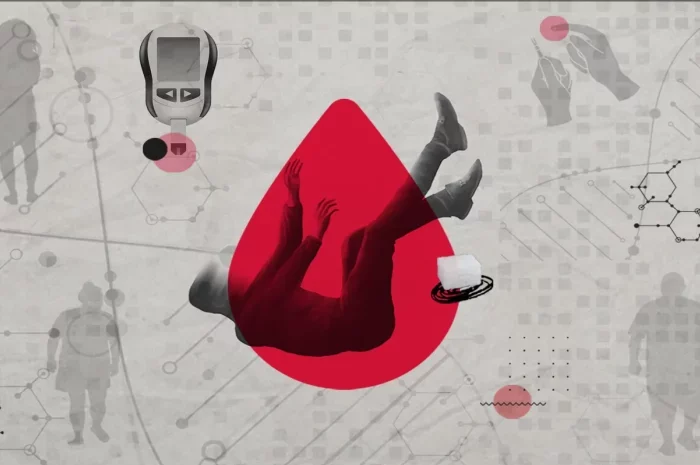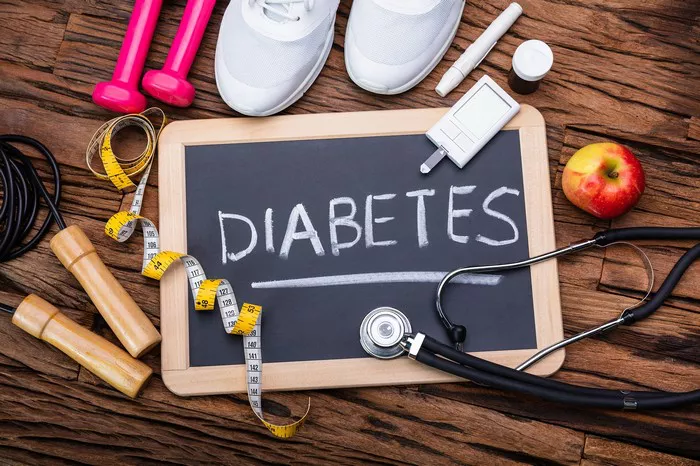Diabetes is a complex metabolic disorder characterized by chronic hyperglycemia resulting from defects in insulin secretion, insulin action, or both. It is a significant health problem globally, with a growing prevalence that has serious implications for public health. Understanding the causes of diabetes is crucial for developing effective prevention and treatment strategies. This article delves into the real causes of diabetes, focusing on both type 1 and type 2 diabetes, their underlying mechanisms, and contributing factors.
Type 1 Diabetes: An Autoimmune Disorder
Type 1 diabetes (T1D) is an autoimmune condition in which the body’s immune system mistakenly attacks and destroys the insulin-producing beta cells in the pancreas. This autoimmune response leads to an absolute deficiency of insulin, requiring lifelong insulin therapy for survival.
Genetic Factors
Genetic predisposition plays a significant role in the development of T1D. Specific genes associated with the human leukocyte antigen (HLA) system on chromosome 6 have been identified as key players in increasing the risk of T1D. These HLA genes are crucial in regulating the immune system. The presence of certain HLA haplotypes, such as HLA-DR3 and HLA-DR4, has been strongly linked to T1D.
Additionally, other genes outside the HLA region, such as the insulin gene (INS), cytotoxic T-lymphocyte-associated protein 4 (CTLA-4), and protein tyrosine phosphatase, non-receptor type 22 (PTPN22), contribute to the genetic susceptibility to T1D.
Environmental Triggers
While genetic predisposition is important, environmental factors also play a crucial role in triggering the onset of T1D. Some of the potential environmental triggers include:
- Viral Infections: Certain viral infections, such as enteroviruses (e.g., Coxsackievirus), have been implicated in the development of T1D. These viruses may trigger an autoimmune response in genetically susceptible individuals, leading to the destruction of pancreatic beta cells.
- Dietary Factors: Early introduction of cow’s milk and gluten in infancy has been suggested as a potential risk factor for T1D. Breastfeeding and delayed introduction of these foods may offer some protective effects.
- Vitamin D Deficiency: Low levels of vitamin D have been associated with an increased risk of T1D. Vitamin D plays a role in modulating the immune system, and its deficiency may contribute to autoimmune processes.
- Toxins and Chemicals: Exposure to certain environmental toxins and chemicals, such as nitrates and nitrites, has been suggested as a potential trigger for T1D, although the evidence is not conclusive.
Autoimmune Mechanisms
The autoimmune destruction of pancreatic beta cells in T1D involves a complex interplay of immune cells, cytokines, and autoantibodies. Key players in this process include:
- T-Cells: Autoreactive T-cells, particularly CD8+ cytotoxic T-cells, recognize and attack beta cells. CD4+ helper T-cells also play a role in promoting the autoimmune response.
- Cytokines: Pro-inflammatory cytokines, such as interleukin-1 (IL-1), tumor necrosis factor-alpha (TNF-α), and interferon-gamma (IFN-γ), contribute to the destruction of beta cells by promoting inflammation and apoptosis.
- Autoantibodies: The presence of autoantibodies against beta cell antigens, such as insulin, glutamic acid decarboxylase (GAD65), and islet cell antigen-2 (IA-2), is a hallmark of T1D. These autoantibodies can be detected years before the clinical onset of the disease.
Type 2 Diabetes: A Metabolic Disorder
Type 2 diabetes (T2D) is the most common form of diabetes, accounting for approximately 90-95% of all diabetes cases. It is characterized by insulin resistance, where the body’s cells become less responsive to insulin, and a relative insulin deficiency.
Genetic Predisposition
Genetic factors also play a significant role in T2D, but the genetic architecture is more complex than in T1D. Multiple genes are involved, each contributing a small effect to the overall risk. Some of the genes associated with T2D include:
- TCF7L2: Variants of the transcription factor 7-like 2 (TCF7L2) gene are strongly associated with an increased risk of T2D. This gene plays a role in insulin secretion and glucose homeostasis.
- PPARγ: The peroxisome proliferator-activated receptor gamma (PPARγ) gene is involved in adipocyte differentiation and lipid metabolism. Variants of this gene are linked to insulin resistance and T2D.
- KCNJ11: The potassium inwardly rectifying channel subfamily J member 11 (KCNJ11) gene encodes a subunit of the ATP-sensitive potassium channel in pancreatic beta cells. Mutations in this gene can affect insulin secretion and increase the risk of T2D.
Lifestyle and Environmental Factors
While genetics contribute to T2D, lifestyle and environmental factors are major drivers of the disease. Some key factors include:
- Obesity: Excess body weight, particularly visceral fat, is a major risk factor for T2D. Adipose tissue produces various hormones and cytokines that contribute to insulin resistance and inflammation.
- Physical Inactivity: Sedentary lifestyle and lack of physical activity are strongly associated with the development of T2D. Regular exercise helps improve insulin sensitivity and glucose metabolism.
- Diet: A diet high in refined carbohydrates, sugars, and unhealthy fats can lead to obesity and insulin resistance. Conversely, a balanced diet rich in whole grains, fruits, vegetables, and lean proteins can help prevent T2D.
- Age and Ethnicity: The risk of T2D increases with age, and certain ethnic groups, such as African Americans, Hispanics, Native Americans, and Asians, have a higher predisposition to the disease.
- Gestational Diabetes: Women who develop gestational diabetes during pregnancy are at an increased risk of developing T2D later in life.
Pathophysiology of Type 2 Diabetes
The pathophysiology of T2D involves a combination of insulin resistance and impaired insulin secretion. Key mechanisms include:
- Insulin Resistance: Insulin resistance is a condition where the body’s cells become less responsive to insulin, leading to decreased glucose uptake and increased blood glucose levels. This resistance is primarily seen in muscle, liver, and adipose tissue. Factors contributing to insulin resistance include obesity, inflammation, and the accumulation of lipids within cells.
- Beta Cell Dysfunction: In response to insulin resistance, pancreatic beta cells initially compensate by increasing insulin secretion. However, over time, beta cells become dysfunctional and fail to produce sufficient insulin. This dysfunction is due to genetic factors, glucotoxicity (high glucose levels), lipotoxicity (high levels of fatty acids), and oxidative stress.
- Incretin Effect: Incretins, such as glucagon-like peptide-1 (GLP-1), are hormones that enhance insulin secretion in response to food intake. In T2D, the incretin effect is diminished, leading to impaired insulin secretion.
- Hepatic Glucose Production: In T2D, the liver produces excess glucose, especially during fasting periods. This is due to increased gluconeogenesis (production of glucose from non-carbohydrate sources) and decreased suppression of hepatic glucose output by insulin.
Other Types of Diabetes
In addition to T1D and T2D, there are other forms of diabetes with distinct causes and mechanisms. These include:
- Maturity-Onset Diabetes of the Young (MODY): MODY is a rare form of diabetes caused by mutations in a single gene. It is characterized by an early onset (typically before age 25) and autosomal dominant inheritance. There are several subtypes of MODY, each associated with different genes involved in beta cell function.
- Gestational Diabetes Mellitus (GDM): GDM is a form of diabetes that develops during pregnancy and usually resolves after delivery. However, women with GDM are at an increased risk of developing T2D later in life. GDM is caused by insulin resistance induced by pregnancy hormones and other factors.
- Secondary Diabetes: This form of diabetes is a result of other medical conditions or treatments, such as pancreatic diseases (e.g., pancreatitis, cystic fibrosis), hormonal disorders (e.g., Cushing’s syndrome, acromegaly), and certain medications (e.g., glucocorticoids, antipsychotics).
See also: What’s the Different Types of Diabetes
Conclusion
Diabetes is a multifaceted disease with a complex interplay of genetic, environmental, and lifestyle factors. Type 1 diabetes is primarily an autoimmune disorder triggered by genetic predisposition and environmental factors, leading to the destruction of insulin-producing beta cells. Type 2 diabetes, on the other hand, is a metabolic disorder characterized by insulin resistance and relative insulin deficiency, driven by genetic susceptibility and lifestyle factors such as obesity, physical inactivity, and poor diet.
Understanding the real causes of diabetes is essential for developing effective prevention and treatment strategies. While genetic factors cannot be modified, lifestyle changes, such as maintaining a healthy weight, regular physical activity, and a balanced diet, can significantly reduce the risk of developing type 2 diabetes. Additionally, ongoing research into the mechanisms of autoimmune responses and beta cell dysfunction holds promise for developing targeted therapies for type 1 diabetes.
Addressing the root causes of diabetes requires a comprehensive approach that includes public health initiatives, education, and support for individuals at risk. By tackling the underlying factors contributing to diabetes, we can make significant strides in reducing the burden of this chronic disease and improving the quality of life for millions of people worldwide.
Related topics:
What Causes Random Hypoglycemia



























